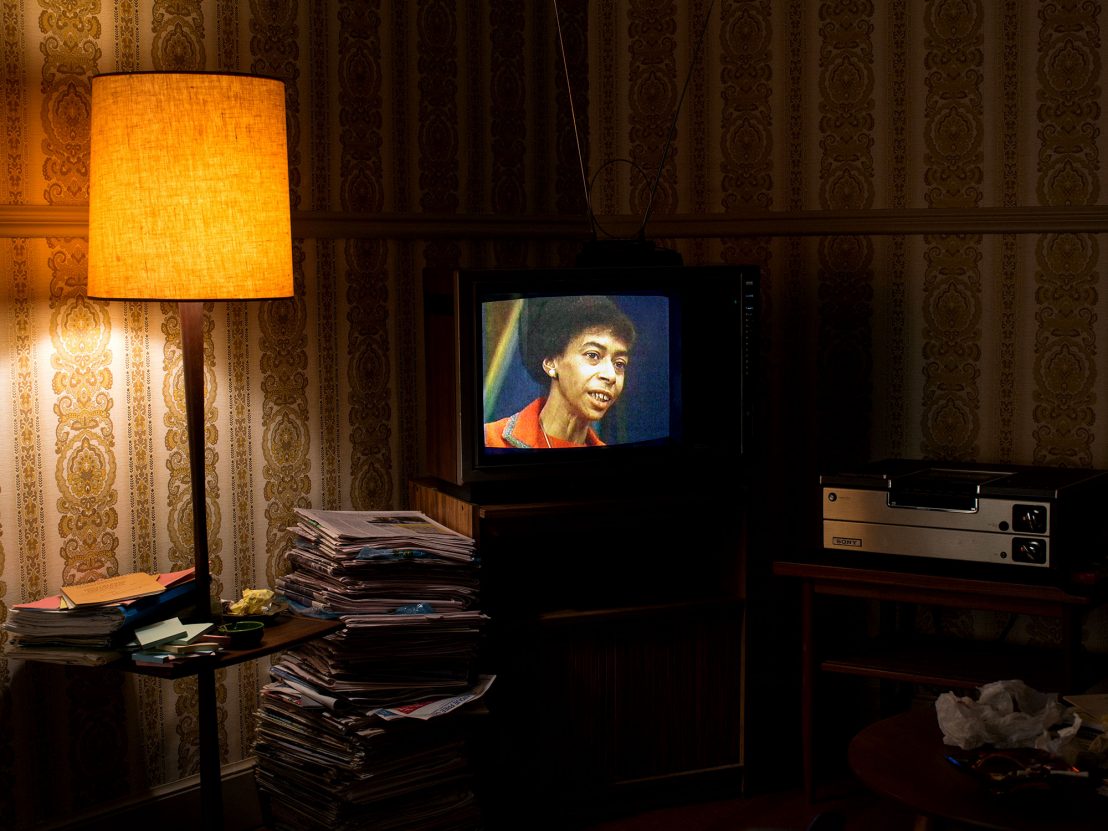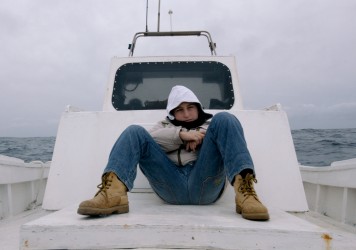
Thirty years’ worth of broadcast news is nearly impossible to imagine in physical form. It would amount to roughly 70,000 VHS and Betamax tapes filled with round-the-clock footage from local stations and cable programmes. The compressing of America’s coverage of war, politics and everyday strife into video tape sounds like a frivolous thought exercise on stretching the limits of documentation, but in a house in Pennsylvania one woman quietly set about preserving America’s broadcast history, one videotape at a time.
Marion Stokes, a librarian and access television producer from Philadelphia, became engaged in socialist activism in the late 1950s. In these meetings, she met her first husband and father to her son, Michael. As Stokes grew to be a prominent figure in local progressive activism, she became increasingly paranoid and antagonistic, placing a heavy burden on her son and husband that ultimately led to the collapse of her marriage.
In 1979, Stokes found herself both enthralled and horrified as the Iran Hostage Crisis unfolded in Tehran. News networks scrambled to cover the events, and Stokes quickly began to see the inconsistencies and bias in the coverage as the situation unfolded. In a prescient recognition of media’s malleable power, she recorded these news broadcasts on VHS in order to document the current moment as protection against changes in narrative.
Stokes recorded the nearly year-long news coverage of the Iran Hostage Crisis, and after the end of the incident, she continued to record the news with the advent of CNN in 1980 and other cable networks soon to follow. What began as a VHS recording of a single event grew into constant, simultaneous recordings of the news on multiple televisions, capturing coverage of the Rodney King trials and subsequent uprisings, the Iran-Contra Affair in the 1980s, the impeachment trial of Bill Clinton, 9/11, and the racially-motivated murder of Trayvon Martin.
Stokes died in December 2012 while recording incoming reports of one of America’s most horrific recent tragedies: the Sandy Hook school shooting in Newtown, Connecticut, which left 20 elementary school children and six adults dead. Following her passing, her son Michael donated her entire archive to the Internet Archive in Richmond, California, in honour of his mother’s life’s work.
The recordings came at a steep personal cost. Stokes’ (entirely justified) paranoia over her political work warped her personal relationships and, later on, isolated her and her second husband John (also a figure in public access television) from their children as she became increasingly detached from the everyday. And yet, the vast archive of broadcast news that resulted from Stokes’ reclusive behaviour is now an invaluable document of the omnipresence of media and its influence on daily American life, containing insight and information that may otherwise have been lost.
The life of Marion Stokes and her surviving family’s efforts to preserve her work are showcased in the documentary Recorder: The Marion Stokes Project. Directed by Matt Wolf, the film frames Stokes as a diligent political archivist, using her tapes as a means of seeking truth in news broadcasting and capturing in real-time some of the most important events in recent American history. Wolf says that he sees Stokes as a “visionary activist,” who, “saw value in a body of material that others were discarding.”
In order to make the film, Wolf and his crew sat down and watched a vast amount of Stokes’ archive. This arduous process, aided by the help of the Internet Archive’s staff and archivist Katrina Dixon, meant sifting through the tapes “often at 10x speed” and looking at footage from specific dates. Wolf found Stokes’ 24/7 taping to be reflective of the initial aims of the project to preserve fact for public consumption: “Marion didn’t editorialise the collection based on her specific politics or interests. I think the whole premise was political in nature – she was doing this to protect the truth, but she wanted people to come to their own historical conclusions.”
The result is an urgent, intimate tribute to an unsung modern folk hero with a prophetic understanding of the way that news media can be both a tool for revolution and a weapon of ignorance. Recorder illustrates this through CSPAN footage of the House of Representatives’ during the Clinton impeachment. Just when the House is taking the official impeachment vote, the station cuts to a “special report” of the then-president announcing a military strike on Iraq as part of Operation Infinite Reach. Wolf describes the footage as jarring and “an explicit distraction – akin to Trump’s tactics – that literally interrupted the televised spectacle of his political unravelling.”
American viewers will have moments of déjà vu watching Recorder, revisiting reports of critical events in their lives. For many, this will be the footage of the earliest moments of 9/11 and reporters reacting to the second plane crashing into the World Trade Center, a sobering of-the-moment realisation of the impending doom of tragedy. For me this moment of remembrance arrived later in the film, during the more optimistic scenes of Barack Obama’s election in 2008. Rewatching that footage today rekindles the unbridled joy of the occasion while simultaneously allowing for a clear-headed re-evaluation of an administration that never quite lived up to its progressive promises.
With the benefit of hindsight, Recorder shows how the news media is in many ways similar to the TV dramas we watch: it relies on human emotion to convey some form of truth. Media shapes lived experience, and vice versa. Through Stokes’ archive we can understand the bias but also the opportunity for meaning in these flawed interpretations: how fact is spread, how historical moments are shape and, perhaps most crucially, the personal reaction of the viewer. More than ever, it’s important that we learn from and take time to reflect upon a media-saturated ecosystem in which the truth is rarely televised.
For more info visit recorderfilm.com
Published 20 Nov 2019

Director Robert Greene explains why he won a documentary writing prize at Sundance.

By Matthew Eng
Kirsten Johnson’s visual autobiography is a striking and knowledgeable account of a life in film.

Fire at Sea director Gianfranco Rosi on filming a rural family in their home in the middle of the migrant crisis.